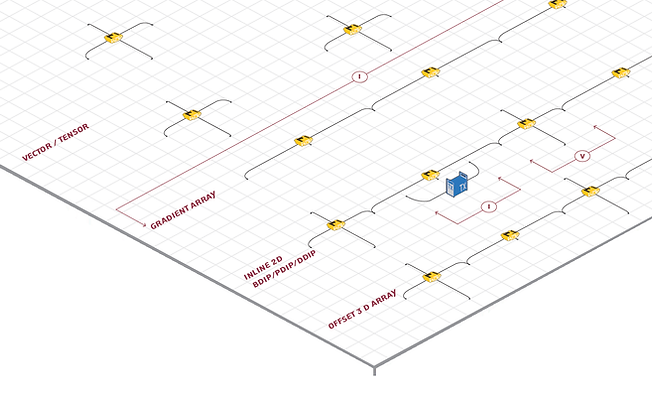Advanced Geophysical Technologies

Applications
MT / AMT / CSAMT / CSEM / CR / TDIP / TEM
The development of the gDAS32 Distributed Acquisition System has been built on the experience of the gDAS24, continuing with a focus on acquisition flexibility and resolution; increasing the ADC to 32-bits of resolution, further decreasing instrument noise, and incorporating additional diagnostic and user interfaces through a radio (Bluetooth or other) connection to almost any hand-held device such as tablet or smartphone. Independent 2-channel units, running from a user-defined schedule, can be customized to synchronously acquire data at sample rates up to 32kHz for any array configuration without the need for inter-nodal communication, ideal for a host of custom arrays in diverse terrains.
Each gDAS32 acquisition system records time series data at various sample rates for two fully differential channels according to a pre-programmed schedule stored in memory controlled by synchronous GPS-PPS timing. This schedule defines the start time, sample rate, duration, and internal filtering options for each acquisition period, including periodic data backups to USB-memory drive. Any number of 2-channel gDAS32 units might be located on any survey grid, line or remote site installed with respective electric field dipoles and / or magnetic antennas.
For broadband Magneto-Telluric (MT) data acquisition, each gDAS32 acquisition system records time series data often primarily during the night) which is post-processed to provide estimates of the transfer function of the subsurface from which the apparent Resistivity and impedance phase are derived. Consequently, an MT result (inversion modelling of Resistivity) is retrieved for each dipole, station or survey line according to setup, providing resistivity models, often to several tens of km depth.

Broadband Magneto-Tellurics
(MT / AMT / CSAMT)
Full Tensor, Vector or Scalar arrays

Induced Polarization / Resistivity
(TDIP/CR)
Vector/Tensor, Gradient, PDIP, DDIP, PP, offset 3D arrays
Time series IP data acquisition simultaneously across any array, in the Time or Frequency Domain (CR) through a bipole, dipole or pole. A dedicated gDAS32 unit and iSense monitors the transmitted current for Complex Resistivity data processing or to provide timing information for Time Domain stacking and robust averaging of received signals on each traverse line, dipole or station. MT data acquisition using the same array provide the transfer functions to infer the local telluric electric fields for telluric cancelation of the IP data to further enhance data quality.
Transient Electromagnetics
(TEM)
Coincident-Loop, In-Loop
Full time series Transient Electromagnetic data acquisition may also be undertaken with the gDAS32 system both as a dB/dt or B-field acquisition system according to the sensor being used. The low noise and high resolution of the system provides high quality data to very low signal levels, extending the decay response to maximise the depth of investigation and target detection. A gDAS-gTX controls the output waveform of third party transmitters with an extremely precise GPS-PPS time base for both standard and non-standard waveforms.
Controlled Source Electromagnetics
(CSEM)
Although still a relatively underused geophysical technique for land-based acquisition, and particularly in the mineral exploration space, CSEM provides a bridge between the near-field IP and “DC” resistivity methods and the far-field MT techniques. The use of a controlled source may provide benefit in very noisy environments. There are again a broad range of array types that may be used, but at its most basic the acquisition requires a distribution of E-field dipoles and H-field sites from which the transfer function for each, independently, is obtained at a set of frequencies (fundamentals and higher harmonics) of transmitter signals through grounded dipoles or ungrounded loops usually located at several sites in and around the area of interest. The CSEM methodology is conducive to incorporation in the case of Vector/Tensor IP and MT surveys, providing a “3-in-1” approach, simply transmitting a few higher frequency current injections through the installed transmitter dipoles in addition to the signals required for IP . Synchronous time series acquisition/monitoring of the E- and H-fields and injected current waveform permit the estimation (calculation) of the relevant transfer functions.